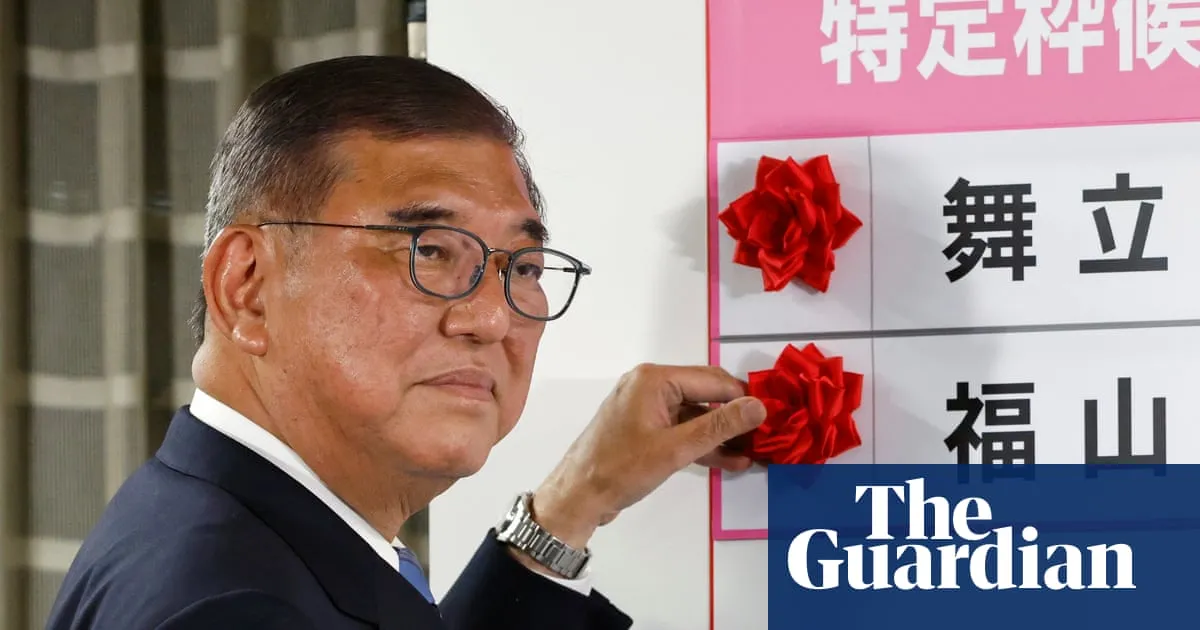
Japan’s ruling coalition is poised to potentially lose control of the upper house, as exit polls from Sunday’s election signal significant political shifts. This outcome could herald a period of political turmoil just as a crucial tariff deadline with the United States approaches. Although the election does not directly determine the fate of Prime Minister Shigeru Ishiba’s minority government, it adds immense pressure on the beleaguered leader, who has already lost control of the more influential lower house in the previous October elections.
Prime Minister Ishiba’s Liberal Democratic Party (LDP) and its coalition partner Komeito need to secure at least 50 seats to maintain stability in the 248-seat upper chamber, where half of the seats were contested. According to an exit poll by public broadcaster NHK, the coalition is expected to hold between 32 and 51 seats, while other broadcasters predict returns of 41 to 43 seats. Should the coalition fall below 46 seats, it would represent its worst performance since its inception in 1999, following a disappointing showing in October’s lower house election.
The recent election results further threaten Ishiba’s administration, opening the door to potential no-confidence motions and increasing calls for leadership change within his own party. Shortly after the polls closed, Ishiba, age 68, addressed the results, stating he “solemnly” accepted the “harsh result.” When asked about his intentions to remain as prime minister and party leader, he confirmed, “That’s right.” He emphasized the importance of ongoing tariff negotiations with the United States, asserting, “It is only natural to devote our complete dedication and energy to realizing our national interests.”
Japan, recognized as the world’s fourth-largest economy, faces a looming deadline of August 1 to finalize a trade deal with the United States or risk facing punitive tariffs in its largest export market. The political landscape is further complicated by the rise of the main opposition party, the Constitutional Democratic Party, which is projected to win between 18 and 30 seats, a decrease from the 22 seats they previously held.
Emerging as a surprise contender, the far-right Sanseito party, which gained traction through its “Japanese first” campaign, is predicted to secure between 10 to 15 seats, a significant increase from just one seat held previously. This party has garnered attention for its warnings about a “silent invasion” of foreigners and has positioned itself as a voice for voters frustrated with current policies. However, it currently holds only three seats in the lower house.
As rising consumer prices, particularly the increased cost of rice, have led to public frustration with the government’s response, opposition parties advocating for tax cuts and enhanced welfare spending have resonated with voters. David Boling, a director at the consulting firm Eurasia Group, noted that the LDP was largely “playing defense” in this election, as many households expressed a desire for reductions in the consumption tax to combat inflation, a stance opposed by the LDP.
The LDP has been advocating for fiscal restraint amidst a jittery government bond market, raising concerns about Japan’s ability to manage its substantial debt. The Sanseito party, which originally emerged during the Covid pandemic, has introduced once-fringe political rhetoric into mainstream discourse, appealing to disillusioned voters. It remains uncertain whether Sanseito can mirror the successes of other far-right parties globally, such as Germany’s AfD and Reform UK.
One young voter, Yu Nagai, a 25-year-old graduate student, expressed his concerns about the increasing visibility of foreigners in Japan. “When I look at the way compensation and money are spent on foreigners, I think that Japanese people are a bit disrespected,” he remarked after casting his ballot in Tokyo’s Shinjuku ward. With foreign-born residents in Japan reaching a record of about 3.8 million last year, making up approximately 3% of the total population, the dynamics of immigration and integration are becoming increasingly significant in the political arena.